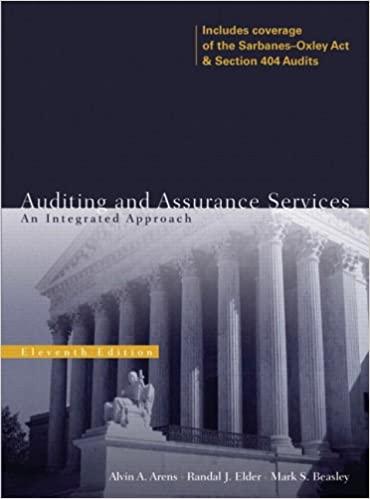Answered step by step
Verified Expert Solution
Question
1 Approved Answer
Financial statements for Solomon Company follow. SOLOMON COMPANY Balance Sheets As of December 31 2019 2018 Assets Current assets Cash $ 23,000 $ 19,000 Marketable
Financial statements for Solomon Company follow.
| SOLOMON COMPANY | |||||||
| Balance Sheets As of December 31 | |||||||
| 2019 | 2018 | ||||||
| Assets | |||||||
| Current assets | |||||||
| Cash | $ | 23,000 | $ | 19,000 | |||
| Marketable securities | 21,400 | 7,400 | |||||
| Accounts receivable (net) | 55,000 | 47,000 | |||||
| Inventories | 140,000 | 148,000 | |||||
| Prepaid items | 29,000 | 14,000 | |||||
| Total current assets | 268,400 | 235,400 | |||||
| Investments | 32,000 | 25,000 | |||||
| Plant (net) | 280,000 | 265,000 | |||||
| Land | 32,000 | 27,000 | |||||
| Total assets | $ | 612,400 | $ | 552,400 | |||
| Liabilities and Stockholders Equity | |||||||
| Liabilities | |||||||
| Current liabilities | |||||||
| Notes payable | $ | 35,400 | $ | 13,900 | |||
| Accounts payable | 88,800 | 75,000 | |||||
| Salaries payable | 23,000 | 17,000 | |||||
| Total current liabilities | 147,200 | 105,900 | |||||
| Noncurrent liabilities | |||||||
| Bonds payable | 120,000 | 120,000 | |||||
| Other | 29,000 | 24,000 | |||||
| Total noncurrent liabilities | 149,000 | 144,000 | |||||
| Total liabilities | 296,200 | 249,900 | |||||
| Stockholders equity | |||||||
| Preferred stock, (par value $10, 4% cumulative, non-participating; 9,000 shares authorized and issued) | 90,000 | 90,000 | |||||
| Common stock (no par; 50,000 shares authorized; 10,000 shares issued) | 90,000 | 90,000 | |||||
| Retained earnings | 136,200 | 122,500 | |||||
| Total stockholders equity | 316,200 | 302,500 | |||||
| Total liabilities and stockholders equity | $ | 612,400 | $ | 552,400 | |||
| SOLOMON COMPANY | |||||||
| Statements of Income and Retained Earnings For the Years Ended December 31 | |||||||
| 2019 | 2018 | ||||||
| Revenues | |||||||
| Sales (net) | $ | 370,000 | $ | 350,000 | |||
| Other revenues | 10,800 | 7,800 | |||||
| Total revenues | 380,800 | 357,800 | |||||
| Expenses | |||||||
| Cost of goods sold | 185,000 | 145,000 | |||||
| Selling, general, and administrative | 69,000 | 64,000 | |||||
| Interest expense | 12,200 | 11,400 | |||||
| Income tax expense | 93,000 | 92,000 | |||||
| Total expenses | 359,200 | 312,400 | |||||
| Net earnings (net income) | 21,600 | 45,400 | |||||
| Retained earnings, January 1 | 122,500 | 85,000 | |||||
| Less: Preferred stock dividends | 3,600 | 3,600 | |||||
| Common stock dividends | 4,300 | 4,300 | |||||
| Retained earnings, December 31 | $ | 136,200 | $ | 122,500 | |||
Required
Calculate the following ratios for 2019 and 2018. Since 2017 numbers are not presented, do not use averages when calculating the ratios for 2018. Instead, use the number presented on the 2018 balance sheet.
- Working capital.
- Current ratio. (Round your answers to 2 decimal places.)
- Quick ratio. (Round your answers to 2 decimal places.)
- Receivables turnover (beginning receivables at January 1, 2018, were $48,000). (Round your answers to 2 decimal places.)
- Average days to collect accounts receivable. (Round your intermediate calculations to 2 decimal places and your final answers to the nearest whole number.)
- Inventory turnover (beginning inventory at January 1, 2018, was $154,000). (Round your answers to 2 decimal places.)
- Number of days to sell inventory. (Round your intermediate calculations to 2 decimal places and your final answers to the nearest whole number.)
- Debt to assets ratio. (Round your answers to the nearest whole percent.)
- Debt to equity ratio. (Round your answers to 2 decimal places.)
- Number of times interest was earned. (Round your answers to 2 decimal places.)
- Plant assets to long-term debt. (Round your answers to 2 decimal places.)
- Net margin. (Round your answers to 2 decimal places.)
- Turnover of assets. (Round your answers to 2 decimal places.)
- Return on investment. (Round your answers to 2 decimal places.)
- Return on equity. (Round your answers to 2 decimal places.)
- Earnings per share. (Round your answers to 2 decimal places.)
- Book value per share of common stock. (Round your answers to 2 decimal places.)
- Price-earnings ratio (market price per share: 2018, $12.45; 2019, $13.90). (Round your intermediate calculations and final answer to 2 decimal places.)
- Dividend yield on common stock. (Round your answers to 2 decimal places.)
| |||||||||||||||||||||||||||||||||||||||||||||||||||||||||||||||||||||||||||||||||||||||||||||||||||||||||||||||||||||||||
Step by Step Solution
There are 3 Steps involved in it
Step: 1

Get Instant Access to Expert-Tailored Solutions
See step-by-step solutions with expert insights and AI powered tools for academic success
Step: 2

Step: 3

Ace Your Homework with AI
Get the answers you need in no time with our AI-driven, step-by-step assistance
Get Started


